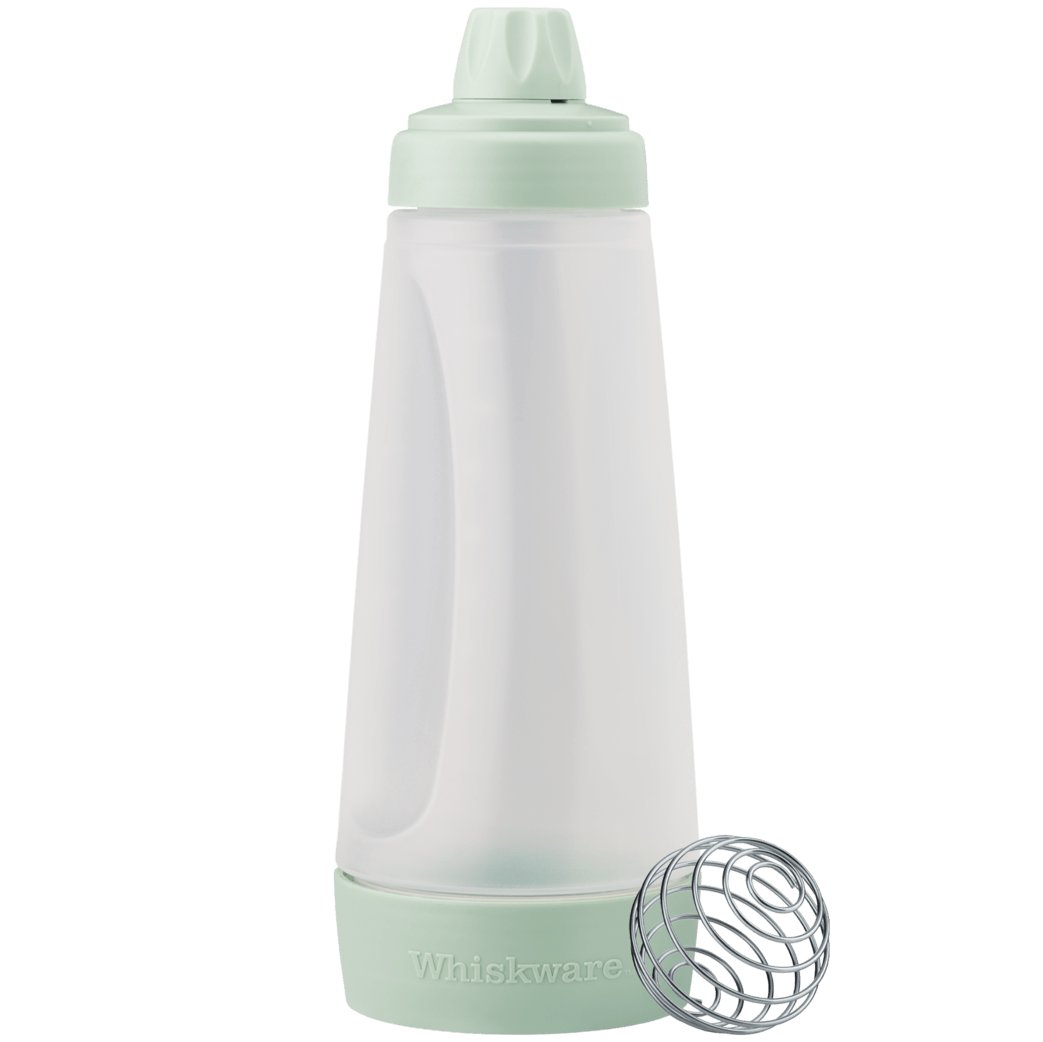7 Tips On How To Make The Best Omelet Ever
It’s time to tackle the basics on how to make an omelet:
You’re going to need a few things to get started:
- A non-stick frying pan that’s about eight inches across and slick enough to skate on
- Anywhere from three to a dozen eggs, depending on your appetite (we recommend sticking with three)
- An Egg Mixer by Whiskware (unless you’d prefer beating the eggs by hand)
- Fillings of your choice (e.g. cheese, onions, peppers, ham, bacon, tomatoes, avocado, etc.)
- A spatula
Tip #1: Size Matters
Ask any chef (or YouTube) and you’ll find a pretty tight consensus that crafting the perfect omelet starts with the right number of eggs and the right size frying pan. Too big a pan and your omelet will come out paper thin; too small a pan or too many eggs and your omelet burns on the bottom before fully cooking throughout.
It’s a delicate balance, so stick with about three eggs and a 7-8” frying pan to start. But before you fire up that pan...
Tip #2: Pre-Cook Your Fillings
The right fillings can take your omelet from zero to hero in no time flat. But if you’re planning on adding diced tomatoes straight into your omelet pan, you’re making a big mistake. Foods like tomatoes, ham, and even bacon can release excess water when they cook up, turning your delicious omelet into a soggy mess.
Before cooking the eggs, bring all of your mix-ins up to a medium heat in a separate pan so they can cook up and release excess juices. Then set them aside so they’re ready to go when their time comes.
Tip #3: Whip it Good
This may be the easiest step of them all if you’ve got the right equipment. Using your Whiskware Egg Mixer (shameless plug) simply crack open your eggs with the built-in egg cracker. If you’re opting for an egg-white omelet, you can easily separate the yolks. If you do go with egg-white route, though, you’ll want to bump up to five or six egg whites to keep the same volume.
From there, simply add the BlenderBall® whisk and shake.
Tip #4: Take it Slow
This is going to be a theme anytime you make an omelet. Stick with low to medium heat throughout, and get the party started by buttering your pan before you put it on the stovetop.
Once your butter starts to melt you can add in a splash of olive oil for extra flavor and a smoother ride. Keep it locked on medium heat when you add the eggs since that will play a key role in making sure your omelet comes out fully cooked without being overdone.
Tip #5: Pour and Stir
Once your pan reaches a nice, medium heat with the butter just starting to bubble, pour in your eggs and get out your spatula. After 20-30 seconds, use your spatula to gently lift up the edges of cooked egg and tilt the pan to let the un-cooked egg fill in underneath.
When the majority of the “runny stuff” has started to firm up, let the omelet sit for a minute or so as you move your mix-ins into the on-deck circle.
Tip #6: Add Fillings
While your eggs are still just a bit moist on top, add your fillings in a smooth layer across the entire omelet.
Tip #7: Fold and Finish
Gently work your spatula under the edges of your omelet and test whether the bottom is ready to be lifted and flipped. If it feels like it hasn’t set completely, be patient for a few more seconds before making your move. If it’s ready to go, gently lift one side and fold it over so that the edges of the omelet meet up all around.
Let the omelet cook over medium heat for a moment longer, until the insides are just about cooked through and the outside is lightly golden. When you’ve reached the promised land, remove that puppy from heat and gently transfer it to its final resting place (like, say, a plate.)
That’s it! Serve with fresh salsa or go at it au naturale, and enjoy the satisfaction of having mastered one of the greatest breakfast dishes known to man.





